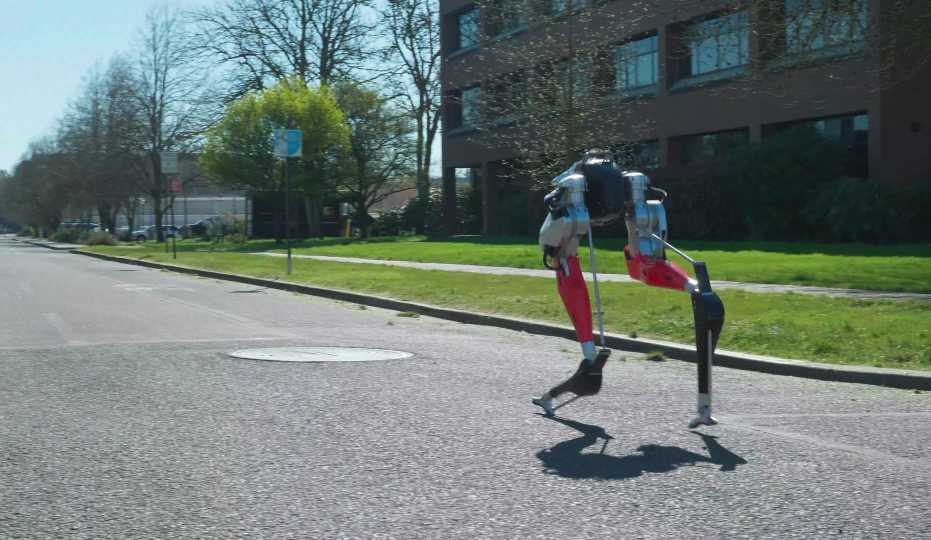Ostrich-inspired two legged robot Cassie crosses 5km running milestone
Robot taught itself to run using machine learning algorithm that helps it stay upright while moving

Cassie, the ostrich-inspired bipedal robot has crossed a new milestone by traversing a distance of 5 kilometres in an outdoor environment in under an hour, untethered and on a single battery charge.
According to its inventors, including robotics professor Jonathan Hurst from Oregon State University (OSU) in the US, Cassie is the first two-legged robot to use machine learning to control a running gait on outdoor terrain.
One of the biggest challenges in designing bipedal robots, the researchers explained, is because running requires dynamic balancing – the ability to maintain balance while switching positions or otherwise being in motion.
In the case of Cassie, whose knees bend like an ostrich’s, they said the robot taught itself to run using a machine learning algorithm that helped it make infinite subtle adjustments to stay upright while moving.
“The Dynamic Robotics Laboratory students in the OSU College of Engineering combined expertise from biomechanics and existing robot control approaches with new machine learning tools,” Mr Hurst said in a statement.
“This type of holistic approach will enable animal-like levels of performance. It’s incredibly exciting,” he added.
Earlier this year, the OSU inventors also demonstrated that Cassie could walk up and down stairs without the help of on-board cameras or lidar technology which is widely used in automated navigation control systems.
Even though Cassie is “blind,” meaning it does not obtain any information about the stairs, the researchers noted that the robot was able to achieve the feat by processing data on the kind of contact its limbs are making with the stairs.
Though the robot took nearly 6.5 minutes of time resetting after two falls — once due to its computer overheating and the other time while executing a turn at a high speed — they said Cassie could complete the 5 km in 53 minutes, 3 seconds.
“Cassie is a very efficient robot because of how it has been designed and built, and we were really able to reach the limits of the hardware and show what it can do,” Jeremy Dao, a Ph.D. student in the OSU lab, said in a statement.
A study analysing the biped robot’s ability to climb up and down stairs using proprioceptive feedback was presented at the Robotics: Science and Systems conference earlier this month.
“Deep reinforcement learning is a powerful method in AI that opens up skills like running, skipping and walking up and down stairs,” Yesh Godse, an undergraduate in OSU’s Dynamic Robotics Laboratory lab, said in the statement.
Mr Hurst believes bipedal robots like Cassie would eventually have the intelligence and safety capabilities to help people in their homes as well as in logistics work like package delivery.
“In the not very distant future, everyone will see and interact with robots in many places in their everyday lives, robots that work alongside us and improve our quality of life,” Mr Hurst added.
Join our commenting forum
Join thought-provoking conversations, follow other Independent readers and see their replies
Comments
Bookmark popover
Removed from bookmarks